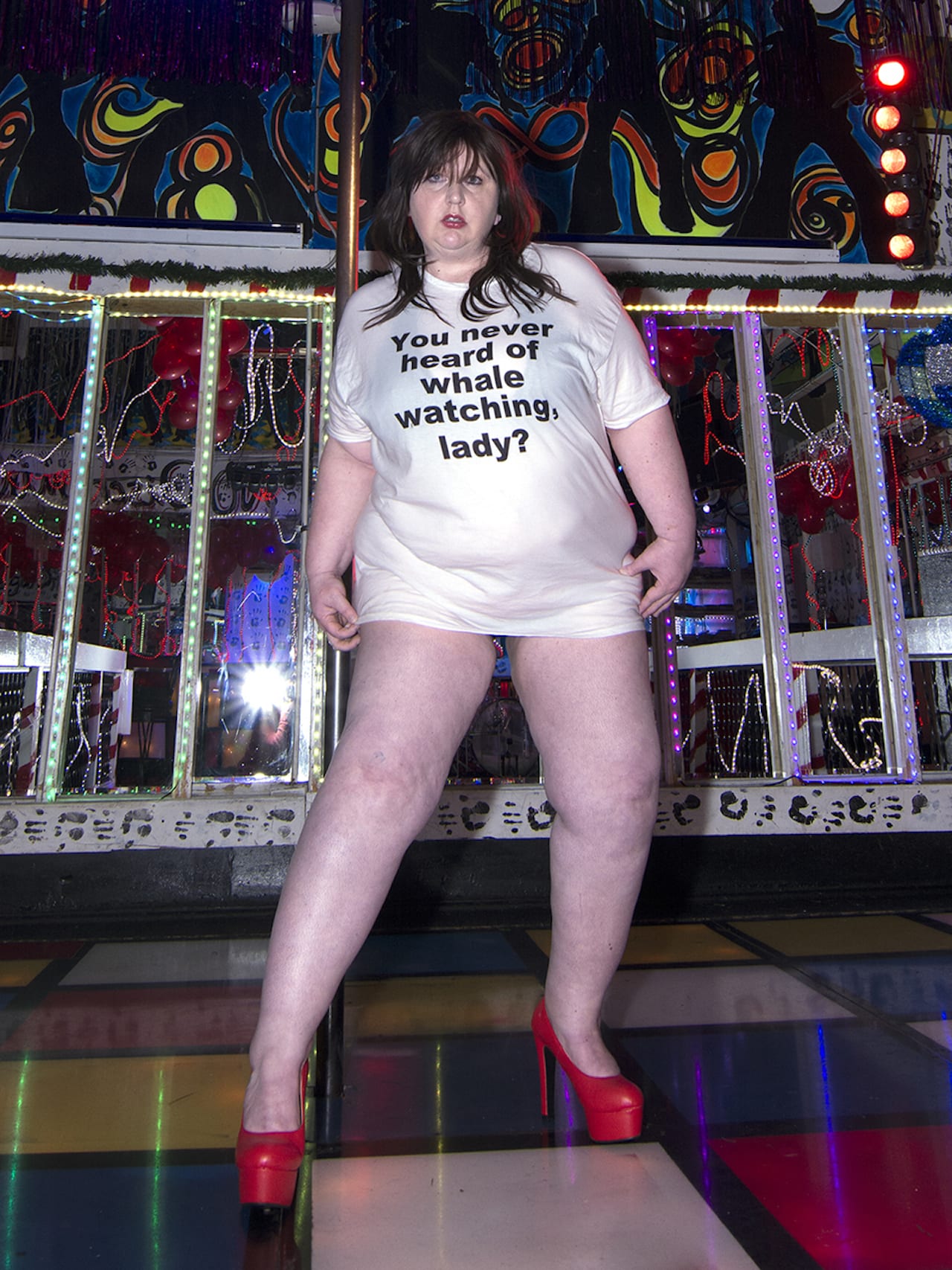In 2010, US photographer Haley Morris-Cafiero set up a camera to take a self-portrait in Times Square, New York. When she got the film developed, she noticed one of the images had captured a passerby, looking at her with what looked like a sneer. Believing it to be body-shaming, caught in the flesh, she set out to capture more, hoping to illustrate the social condemnation that polices body size in the US and beyond. Her resulting book, The Watchers, was published in 2015 to acclaim, and the images went on to be widely exhibited, and shown online.
As soon as the images went public, however, Morris-Cafiero encountered another wave of social control – negative images posted online or emailed to her, with vicious comments on her body and what was apparently read as her audacity in highlighting peoples’ responses to it. “The major problem is she’s disgusting,” read one such reaction. “Normal people are never going to want to fuck you, regardless of how much you complain,” read another.
Again, rather than being hurt, Morris-Cafiero was amused – and inspired. Immediately deciding she’d use the comments to make a project, she experimented for two years with her response. “I resolved the challenge in early 2018 when I realised that an image cannot be removed from the internet, and if it includes text in the image then it could not be deleted,” she says. “I decided to costume myself like the photos of my bullies that I found on their public profiles. I then inserted their bullying comment into the photograph.”
Calling out those who had felt free to comment, The Bully Pulpit turns the tables on the would-be judges, putting the focus on their behaviour rather than Morris-Cafiero’s physique or work. For her, the comments say more about the people who make them than about her, and she questions their motivations for speaking out. “If they had more productive outlets, I am sure that they would be using their efforts for those purposes,” she says. “Some of these people truly believe that they are trying to help me – which is what is the saddest part, that they think someone needs their help in this way.”

The project also puts the spotlight on peoples’ behaviour online, and on our supposed anonymity on the internet. Some of those who made comments did so in person, providing their name and email address, but Morris-Cafiero says even those who trolled anonymously were easy to track down. She is sure that many of those who commented would not have done so if they had spoken to her one-to-one – and that the power of the mob also spurred some of them on.
“There were thousands of bullies for me to choose from so I chose the ones who visually inspired me,” she says. “Some gave me their name, email, address, phone number, etc so they were very easy to find. Others tried to hide their likeness with pictures of cartoons. But with a 30-second internet search I found where he was arrested and within two hours I had his mugshot. Through this, I also want to challenge what we believe as public versus what is private.
“The ones who bullied me did it online because they were celebrated and egged on by other trolls in the threads,” she continues. “If they were alone, I don’t think they would say these things to me in person. But if they were in a group who would celebrate them, they would say it to my face.
“We control our profiles on social media. But these profiles to do not show what we comment on other pages and posts. Several of the people made horrific comments about me (and I am sure others) on media posts but on their profile page had every trendy ‘support’ meme whenever it was popular. If our profiles listed the hateful things that we said on other posts, then I don’t think they would be so quick to make the comment if the people they are trying to impress knew about their hate.”

By using her critics’ words, Morris-Cafiero allows their behaviour to speak for itself; in the costumes she constructed, though, she allowed herself a dose of irony. Deliberately rough, verging on the grotesque, her costumes allude to “the false sense of protection that the internet provides these and other bullies” but also give a physical manifestation of the ugliness of their words – and, hopefully, give the viewer a laugh while encouraging them to think all this through.
“As I am interested in addressing difficult subjects in my work, I use humour to neutralise some of that negativity,” says Morris-Cafiero. “For Bully Pulpit, I wanted humour to be present in the photos because I always laugh when I receive or read one of these comments. I think it is such a waste of their time and electricity to write a comment that they think will hurt me or make me stop what I am doing.
“I know that I am unique in this reaction and that many are deeply hurt when they are bullied,” she adds. “But I hope to show them that the bullies are just weak people.”
The Bully Pulpit by Haley Morris-Cafiero is on show at Belfast Exposed until 18 May. The book of the project will be launched at Offprint London on 17 May.
–




